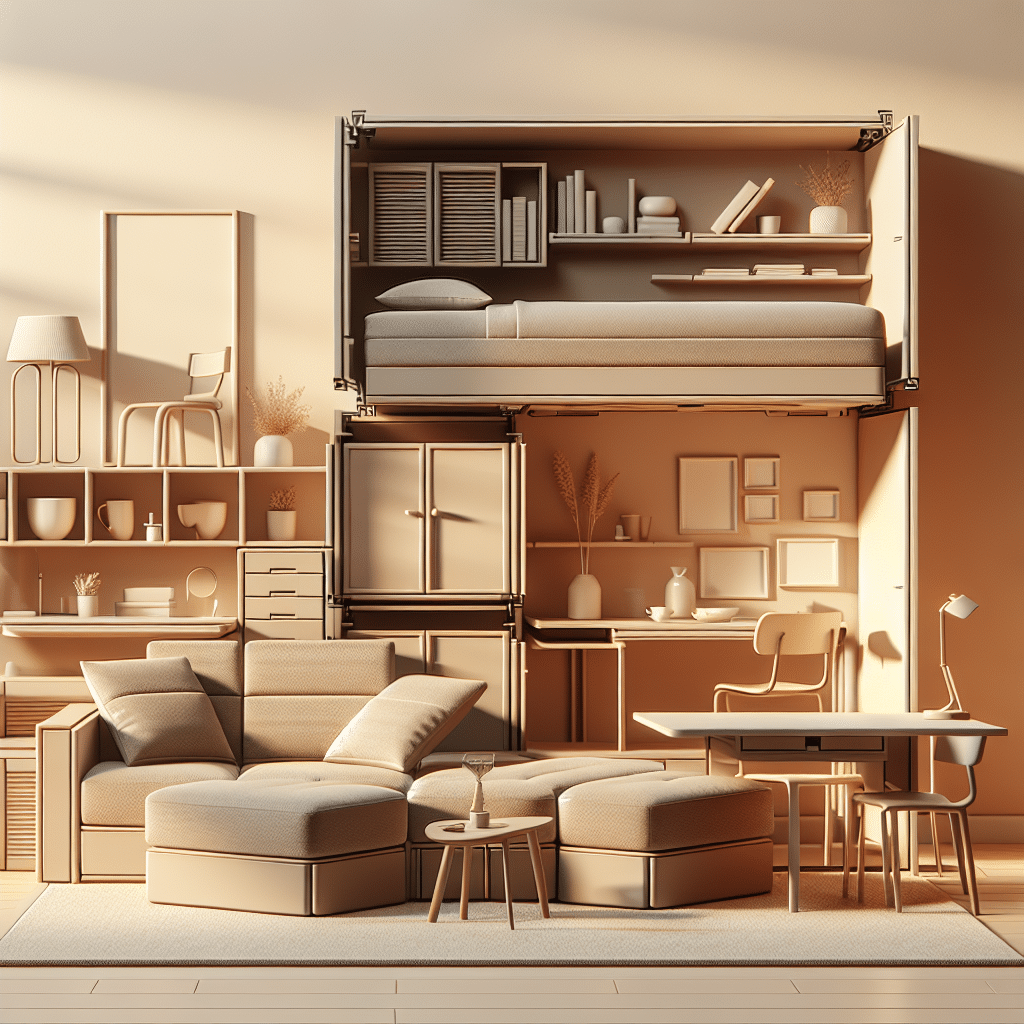Understanding Multi-Functional Furniture
In today’s urban landscape where space is often at a premium, multi-functional furniture is becoming an essential component in modern living. This innovative approach to design promotes versatility and efficiency, catering to a lifestyle that demands adaptability without compromising on style.
Benefits of Multi-Functional Furniture
1. Maximizing Space
Multi-functional furniture allows you to make the most of limited areas. By serving multiple purposes, it reduces the number of pieces required, filling a room with less clutter while maintaining essential functionalities. For instance, a sofa bed serves as both a couch and a sleeping area, eliminating the need for two separate items.
2. Enhances Aesthetic Appeal
Versatile designs often use minimalist aesthetics, promoting a clutter-free environment. They serve as focal points, adding character to a room while being practical. Multi-functional furniture often comes in sleek designs, allowing for creativity in decor while accommodating various functions.
3. Cost-Effective Solutions
Investing in multi-functional furniture can save money in the long run. Instead of purchasing a separate bed, desk, and storage unit, investing in a single piece that accommodates multiple uses can be more economical. For example, an ottoman with internal storage can function as seating, a footrest, and a place to store blankets or books.
4. Improved Organization
Many multi-functional pieces incorporate storage solutions, helping to declutter living spaces. Tables with built-in shelves or chairs that double as storage containers can drastically improve organization, making it easier to maintain a tidy environment.
Types of Multi-Functional Furniture
1. Sofa Beds
Sofa beds are classic examples of multi-functional furniture, particularly popular in smaller apartments. They provide seating during the day and transform into a comfortable bed at night. Modern designs often come with improved mechanisms for smooth transitions and additional features like built-in storage for linens.
2. Murphy Beds
Murphy beds, or wall beds, fold up into the wall or cabinetry, freeing up floor space when not in use. They are particularly suited for studio apartments or guest rooms and often come with additional shelving or storage options that enhance their functionality.
3. Convertible Coffee Tables
Convertible coffee tables can transform from a low table into a dining height table or even a desk. Many models are designed with additional storage compartments, making them perfect for small living areas where space is at a premium.
4. Storage Ottomans
Ottomans that double as storage units are ideal for small spaces. They provide seating or a footrest while also offering hidden compartments to store items like blankets or board games, making them versatile and practical.
5. Multi-Purpose Desks
With the rise of remote work, multi-purpose desks have become increasingly popular. Adjustable desks that can function as both sitting and standing workspaces promote ergonomics and health. Desks with integrated shelving or floating designs can save floor space while offering a productive work environment.
6. Nesting Tables
Nesting tables are a set of smaller tables that can be stored together or used separately, providing flexibility depending on the occasion. They are perfect for entertaining guests, allowing for additional surface area without overwhelming the space when not in use.
Choosing the Right Multi-Functional Furniture
When selecting multi-functional furniture, consider the following factors:
1. Assess the Space
Measure your space to understand the dimensions and layout. Choose pieces that fit well without making the area feel cramped.
2. Functionality Needs
Identify which functions are essential for your lifestyle. If you frequently host guests, a sofa bed or convertible coffee table might be crucial. For a home office setup, prioritize adjustable desks or storage solutions.
3. Style and Design
Choose pieces that complement your existing decor. Various styles range from contemporary to vintage, allowing you to find options that blend seamlessly with your aesthetic.
4. Quality and Durability
Look for well-constructed items made of high-quality materials. Multi-functional furniture should withstand daily use and offer longevity, making them a worthwhile investment.
5. Storage Solutions
Evaluate how much storage space you need. Pieces with built-in storage can aid in organization and simplify clutter management in smaller areas.
Sustainability and Multi-Functional Furniture
In today’s eco-conscious market, many manufacturers focus on sustainable practices, creating multi-functional furniture from recycled materials or sustainably sourced wood. This not only reduces environmental impact but also encourages a lifestyle centered around sustainability, where less is often more.
Conclusion
In essence, multi-functional furniture not only enhances the utility of living spaces but also supports a modern, dynamic lifestyle. From maximizing small areas to reducing clutter and cost, these versatile pieces prove essential for contemporary homes. Embracing this furniture style facilitates the blending of practicality with aesthetics, catering to diverse needs while allowing for creativity and expression in design.
